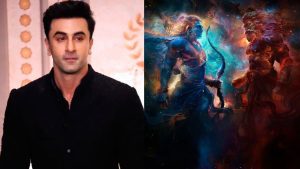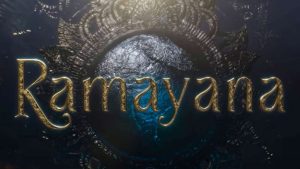Mumbai, July 15, 2025 – Billion‑dollar ambitions and mythic storytelling converge in Ramayana, India’s most expensive film ever, produced by Namit Malhotra. Scheduled in two parts for Diwali 2026 and Diwali 2027, this epic adaptation of Valmiki’s ancient tale brings together Ranbir Kapoor (Lord Ram), Sai Pallavi (Sita), Yash (Ravana), Sunny Deol (Hanuman), and other industry heavyweights.
Childhood Inspirations Shape a Grand Vision
Malhotra often recounts a pivotal childhood moment watching Jurassic Park, when he felt the power of film to craft immersive worlds. This early fascination evolved into a dream to elevate Indian cinema to the same immersive heights. During the recent Hollywood writers’ strike, he reflected on global perceptions of Indian stories—often framed through narratives of poverty. He resolved to tell a story of strength and civilisation: “Ramayana became that story for me”.
Also Read : Outlander Season 7 to Premiere on Netflix in August 2025, But US Fans Must Wait Until 2027 for Part 2
At an estimated ₹4,000 crore (US $500 million), Ramayana is twice as expensive as previous high‑budget Indian films . Remarkably, Malhotra and co-producer Yash are self-funding the project, with no external backing. He acknowledges the “lunatic” budget, but positions it as a strategic investment to match Hollywood’s grandest productions
Cast & Crew: Star Power Meets Global Expertise
- Ranbir Kapoor steps into his most ambitious role yet as Lord Ram.
- Yash, apart from playing Ravana, also brings co-financing muscle.
- Sai Pallavi and Sunny Deol bring emotional depth as Sita and Hanuman respectively.
The film integrates global expertise: stunt direction by Terry Notary and Guy Norris; visual effects by DNEG, the Oscar-winning studio co-led by Malhotra; and cinematography by Pankaj Kumar and Mahesh Limaye.
 Visual Effects Expertise to Deliver a New Cinematic Benchmark
Visual Effects Expertise to Deliver a New Cinematic Benchmark
With a deep background in visual storytelling, Namit Malhotra brings unmatched technical excellence to Ramayana. As CEO of DNEG, his company has delivered Oscar-winning VFX in films such as Inception, Dune, Oppenheimer, and Interstellar. Leveraging this expertise, Ramayana is expected to set new benchmarks for Indian cinema through state-of-the-art digital environments, immersive battles, and photorealistic effects that rival Hollywood’s biggest productions.
The choice to partner with DNEG reflects Malhotra’s intention to give the story a visual treatment that aligns with its mythological grandeur. From building vast kingdoms of Ayodhya and Lanka to rendering divine entities with cinematic realism, every frame is being designed for theatrical spectacle.
From Hollywood Stereotypes to Cultural Reclamation
Namit Malhotra’s core motivation extends beyond cinematic excellence. He seeks to reframe India’s narrative in global cinema. During his recent podcast conversation with Prakhar Gupta, he addressed how Indian stories abroad have often shown the country through a lens of poverty and struggle. Films like Slumdog Millionaire, Gandhi, and Lion—while critically acclaimed—portrayed India as a land of suffering or corruption.
Malhotra sees Ramayana as a cultural reclamation. “This is not a poverty narrative,” he emphasized. “This is the story of the world’s oldest civilisation, and it deserves the scale of Dune or Avatar.” His aim is to spotlight India’s spiritual legacy, technological wisdom, and ethical foundations through a story that has inspired generations.
A Musical Collaboration That Bridges Worlds
The musical composition for Ramayana marks a historic collaboration between India’s A.R. Rahman and Hollywood’s Hans Zimmer. Zimmer, known for The Dark Knight, Gladiator, and Inception, makes his Bollywood debut with this film. Their collaboration is expected to create a score that blends Indian classical traditions with cinematic orchestration designed for IMAX and Dolby Atmos formats.
This music partnership not only expands the emotional depth of the film but also reflects its broader vision—fusing East and West for a truly global experience.

Strategic Rollout, Global Campaign, and Cultural Momentum
The rollout strategy is as ambitious as the production itself. The teaser will launch on Diwali 2025, followed by major marketing pushes at Times Square, the Cannes Film Festival, and international conventions. The logo reveal and the first global promo are planned to align with Hindu festivals and cultural events, building global anticipation.
Malhotra’s team is also seeking CBFC approval with the highest level of cultural sensitivity, ensuring the film honors religious sentiments while appealing to global secular audiences. Translations and dubbed versions in over 20 languages are in development.
Ramayana as a Franchise and Legacy Builder
More than a two-part film, Ramayana is being positioned as a cultural franchise. Malhotra has hinted at future stories set in the same mythological universe—prequels, side stories, and spin-offs exploring Hanuman’s journey or Ravana’s backstory. If successful, it could evolve into India’s answer to Marvel’s cinematic universe, but rooted in sacred texts and spiritual philosophy.
By merging devotional storytelling with franchise-building strategy, Malhotra is building a model that Indian cinema has long needed—sustainable, expansive, and deeply rooted in its own heritage.

A Cinematic Milestone for Indian Storytelling
With Ramayana, Namit Malhotra isn’t just making a film—he’s crafting a movement. One that demands recognition for India’s mythologies in the same breath as Western epics. His project demonstrates that Indian narratives don’t need to conform to Hollywood stereotypes to succeed internationally. They can lead, inspire, and even define the global cinematic landscape.
As the first teaser nears release and post-production continues at DNEG, expectations continue to mount. If Ramayana delivers on its promise, it will not only make history—it will change it.

